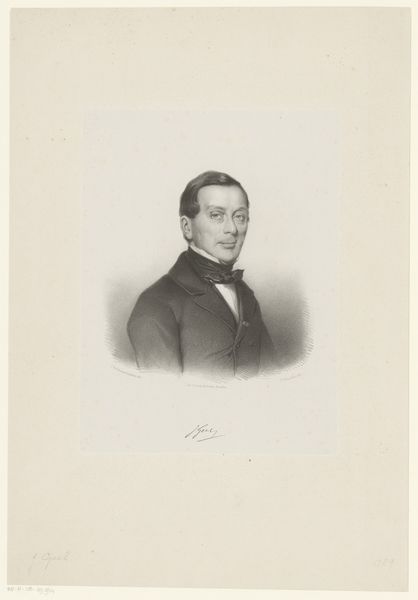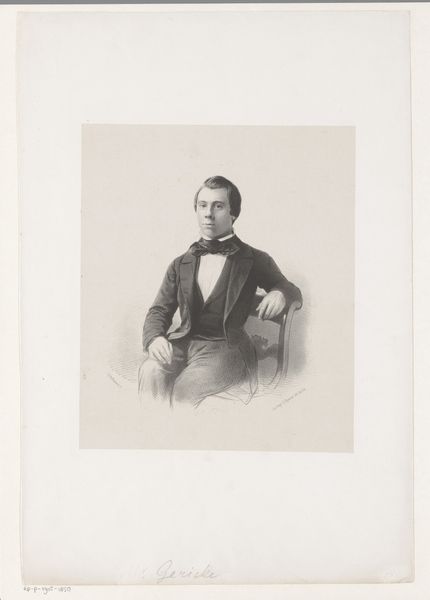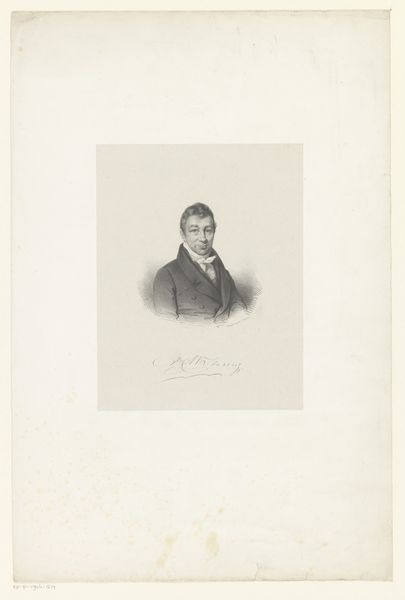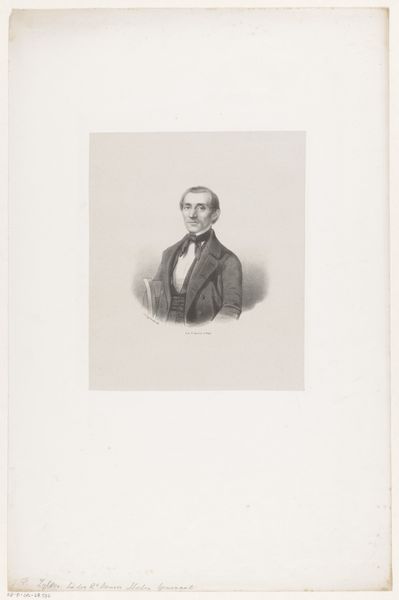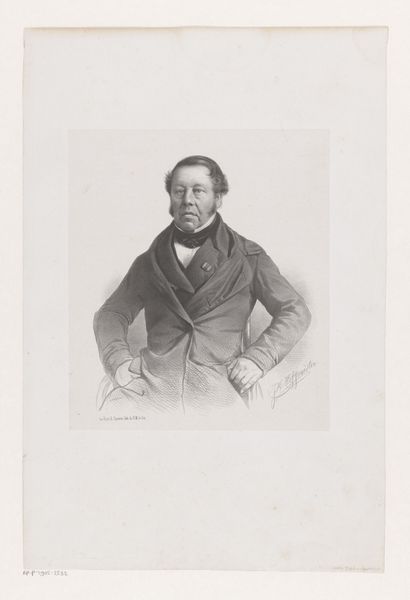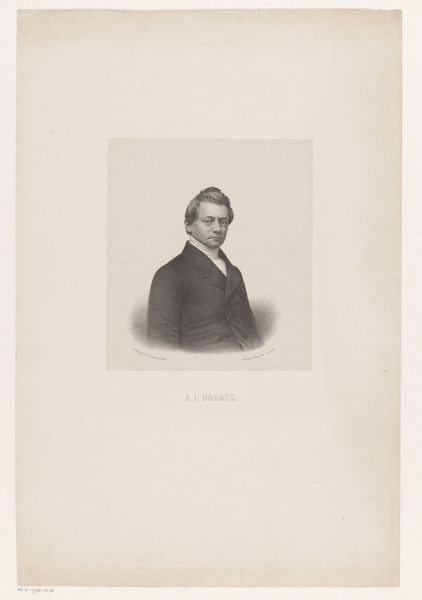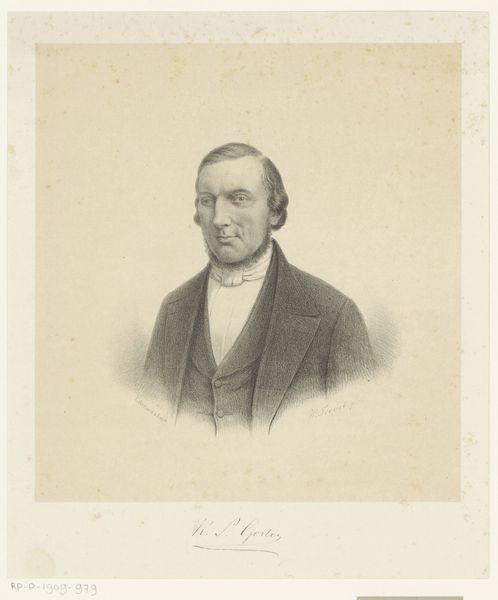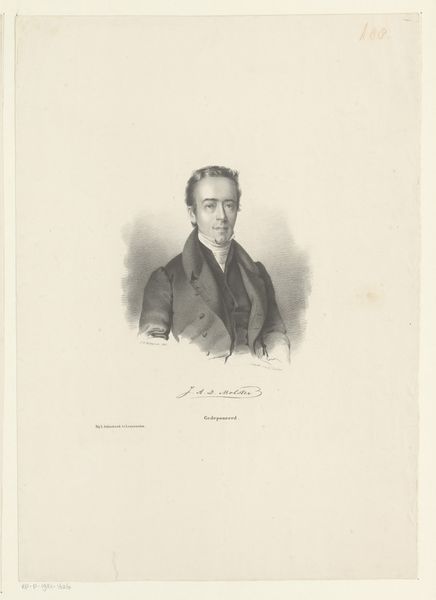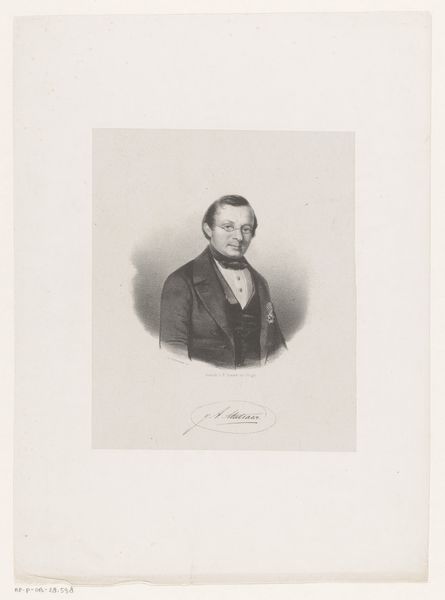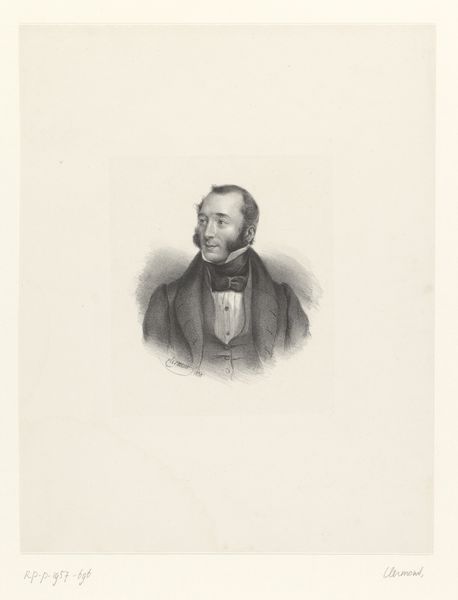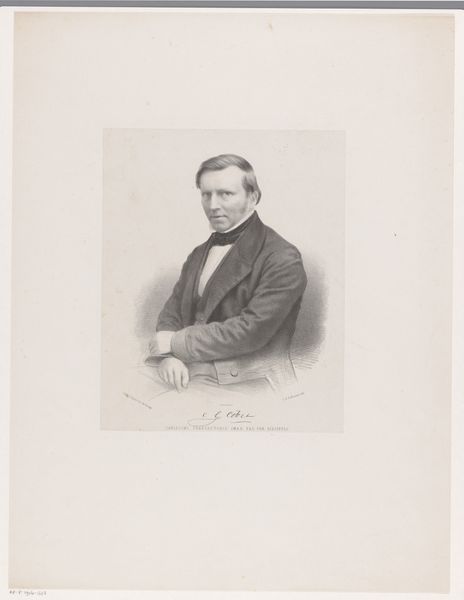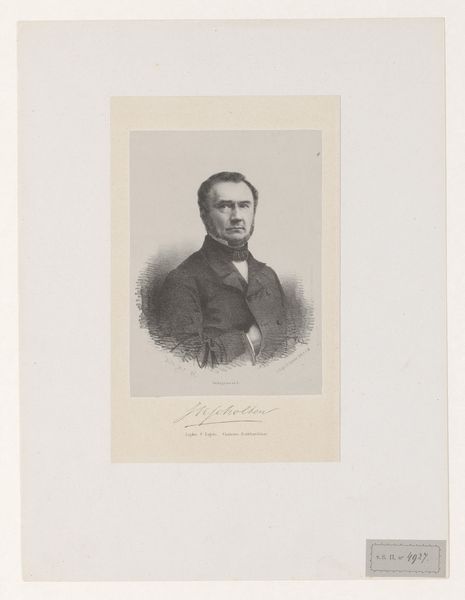
Portret van een onbekende man, mogelijk Sebastiaan Cornelis Nederburgh 1827 - 1873
0:00
0:00
print, engraving
#
portrait
#
neoclacissism
# print
#
pencil drawing
#
academic-art
#
engraving
#
realism
Dimensions: height 375 mm, width 295 mm
Copyright: Rijks Museum: Open Domain
Curator: Here we have "Portrait of an Unknown Man, Possibly Sebastiaan Cornelis Nederburgh," made between 1827 and 1873 by Hendrik Wilhelmus Last. It’s currently held in the Rijksmuseum. What's your initial impression? Editor: Striking! There's an intensity in his gaze, a quiet self-assurance. It has a certain gravitas. It feels…authoritative. Curator: Absolutely. The artist clearly understood the politics of image making at the time. Portraiture served very specific social functions. Take the inclusion of the coat of arms; it’s clearly making a statement. Editor: You’re right, the engraving medium gives it a certain formality, yet the detailed hatching really speaks to Last’s technique, how his hand physically shaped the image. The labour involved is considerable. Curator: The subject’s clothing – the cut of his coat, the cravat, even the way the light falls across his lapel– these aren't arbitrary details. They’re carefully constructed markers of status, connecting him to a particular socio-economic class. Editor: The engraving itself, made for reproduction, speaks to broader accessibility. It wasn’t about a unique artwork but about disseminating an image widely through society. Who was meant to see this portrait? Who consumed it? Curator: Presumably, this work was circulated amongst a particular elite, reinforcing societal hierarchies through recognizable visual cues. Editor: But “unknown man”? That anonymity challenges the very idea of individual power normally conveyed through portraits. It hints that the sitter's social position might be more important than his specific identity. Curator: Or it could reflect shifts in societal memory, and institutional cataloguing failures! Sometimes the subjects disappear and we lose crucial context about its intended use, creating frustrating gaps in art historical record. Editor: A shame, though this uncertainty only amplifies questions about process and social status and the relationship between artistic representation and power. Curator: Indeed. It allows us to delve into the layered complexities of artistic representation, interrogating both what the portrait reveals and conceals. Editor: Exactly! Now, every mark on that surface suddenly feels charged with intent, reflecting artistic labor but also historical circumstances.
Comments
No comments
Be the first to comment and join the conversation on the ultimate creative platform.
